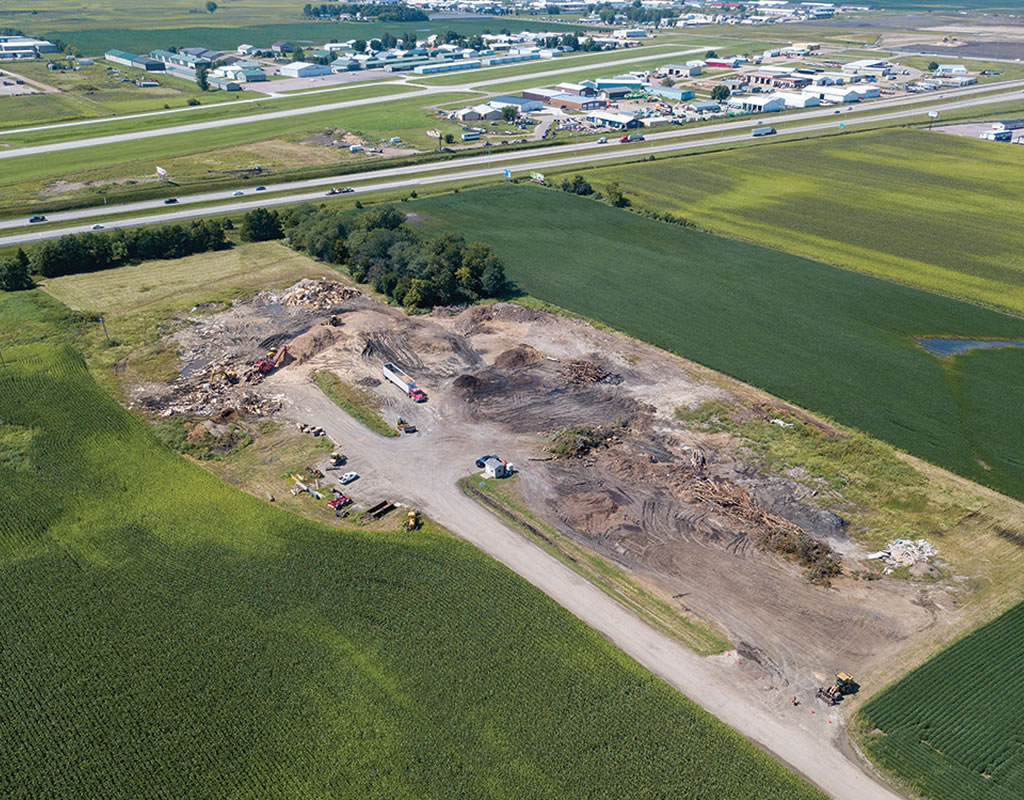By Kathleen Marquardt
Tom DeWeese, President of American Policy Center (APC), once wrote that there are thousands of non-governmental organizations (NGOs) working with the UN to subvert property rights. Of course, they don’t just announce that property rights are now null and void, because that would create a stir. Instead, they use language that sounds innocent and helpful to our society. One such tool that is now being used to target rural lands for takings is the “Conservation Easement”, and its threat is growing.
Background
The right to own property is one of the main pillars of freedom. Numerous Revolutionary patriots wrote about the necessity of property rights for freedom; without that right they could not own the printing presses to share their grievances and promote the rights of man and desires for self-ownership. There have been encroachments on private property over the past one hundred plus years, but now we are seeing a steady army of those who seek to take away our property rights. As Tom described in his book, Sustainable, the “Conservation Easement” is but one of the tools NGOs are using to accomplish their goals.
Our founding fathers drafted the Constitution to form a limited federal government, designed to take care of only those duties that were truly national business. All other powers were left to the state governments or the people. Article One, Section 8, Clause 17, offers the only provision in the Constitution for federal ownership of land. It provides for the creation of Washington, D.C., as the seat of the federal government, and allows the federal government to purchase lands in a state with “…the Consent of the Legislature of the State in which the Same shall be, for the Erection of Forts, Magazines, Arsenals, dock-Yards, and other needful Buildings;”[i]
Most older Americans know the Magna Carta’s role in property rights law in the Constitution, but, since it is no longer taught in schools, here is a very short explanation:
“Americans of the founding generation’s .. . . views were strongly shaped by the English constitutional tradition. Colonial Americans revered Magna Carta (1215) as a safeguard against arbitrary government. Several provisions of this famous document protected the rights of property owners: 1) The king agreed not take, imprison, or disseize a person of property “except by the lawful judgment of his peers or by the law of the land”. The “law of the land “clause was the forerunner of the due process norm. 2) The king promised not to take provisions without immediate payment. This language acknowledged the principle that government must pay the owner when it acquires private property.”[ii]
From that also came the Rule against Perpetuities
“Under the Common Law, the principle that no interest in property is valid unless it vests not later than twenty-one years, plus the periods of gestation, after some life or lives in being which exist at the time of the creation of the interest.
The courts developed the rule during the seventeenth century in order to restrict a person’s power to control perpetually the ownership and possession of his or her property after death and to endure the transferability of property. The rule includes the period of gestation to cover cases of posthumous birth.”[iii]
Today
Long deemed to be natural rights and unassailable, property rights will have to be taken like the salami – one slice at a time. The attack on the essence of property rights has been going on for over 100 years. But only those waging this attack knew there was a war going on. It started as just a desire by one man to preserve green space and historic sites near Boston. His quest also bore the Land Trust.
The new version of Conservation Easements (CE) was brought slowly and gently into the picture. Like other programs that produce mega-bucks and mega-power, conservation easements became a hot commodity – not for the landowner but for those who wanted to gain control of someone else’s land- Land Trusts.
“Conservation easement is a deeded transfer of an interest in real property to a qualified charity that results in a tax deduction in exchange for the contribution. The purpose is to conserve or protect the land or its resources for future generation. However, the conservative easement allows owners to retain other private property rights and to live on and use their land. A conservation easement is legally binding. The easement creates a legally enforceable land preservation agreement between a landowner and a government agency. The restrictions of the easement run with the land. Conservation easements are binding on all future owners of the property.”[vi]
The first Land Trust was established in the Commonwealth of Massachusetts, in 1891, to preserve “beautiful and historic places” around Boston. Almost a half-decade after Charles Eliot, the New Englander who proposed the easement, conservation easements were next used by the National Park Service to purchase land along parkways. Those actions, another half-decade later, would be the grounds used to invalidate the Rule of Perpetuities. We cannot go back and watch how the Greens or, more likely, their lawyers conceived of the idea of using conservation easements to first tie up lands, then, when that became easy and was almost un-objected to, they kept ratcheting up the ‘taking’ without ever having to worry about the Rule of Perpetuities. But we can see exactly how it is being done.
In the chapter titled, “Attack of the NGOs in Sustainable, DeWeese wrote “One rarely hears of it. Few elected officials raise an eyebrow. The media makes no mention of it. Yet, power is slowly slipping away from our locally-elected representatives into the hands of private, non-elected people and organizations. They come equipped with their own agenda, enforced by thousands of dedicated activists.”
“Influencing the UN and helping to write policy are thousands of non-governmental organizations (NGOs). These are private groups, each of which seeks to implement a specific political agenda according to its own charter. There are hundreds of these groups covering every issue of Sustainable Development. NGOs are also referred to as a ‘Civil Society’ in UN documents. A quick look at local government planning policies will see them referred to as ‘Stakeholders’ for the community, even though they are seldom from that area. Through the UN infrastructure, particularly through the UNEP, they have great power.”
An NGO is not just any private group hoping to influence policy. True NGOs are officially sanctioned by the United Nations. That means they not only can sit in on international meetings, but can actively participate in creating policy, right along side government representatives and diplomats.[vii]
Conservations Easements and Land Trusts (LT) grew slowly. It wasn’t until Sustainable Development became the issue du jour that the power elite figured out that CEs could be goldmines for little financial outlay. Once it was discovered that, not only could Land Trusts gobble up land at very low prices, they could turn around and sell these to the government for full price or they could swap the land for preferential land belonging to the government. It should also be noted that “Land Trusts” are required to be NGOs.
The NGO that DeWeese didn’t mention in his book is the Conference of Commissioners on Uniform State Laws, (or Uniform Law Commission, ULC) which was established in 1892. It purportedly “provides states with non-partisan, well-conceived and well-drafted legislation that brings clarity and stability to critical areas of state statutory law.
“. . . the organization also utilizes input from legal experts, and advisors and observers representing the views of other legal organizations or interests that will be subject to the proposed laws.”[viii]
The ULC wrote the Uniform Conservation Easement Act (UCEA) in 1981, which did away with the Rule of Perpetuities — and no one said a word. One day we were secure in our property rights under the Rule, and the next it was gone. No one squawked that it would destroy property rights. Where were the legal scholars?
Cui Bono? The National Historic Preservation, National Association of Realtors, and the National Park Service, among others were advisors on the UCEA.
The Law of Perpetuity says you do not get to control how your property is used after you die. But, somehow, the ULC with its CE Act:
• enables durable restrictions and affirmative obligations to be attached to real property to protect natural and historic resources. Under the conditions spelled out in the Act, the restrictions and obligations are immune from certain common law impediments which might otherwise be raised. The Act maximizes the freedom of the creators of the transaction to impose restrictions on the use of land and improvements in order to protect them, and it allows a similar latitude to impose affirmative duties for the same purposes. In each instance, if the requirements of the Act are satisfied, the restrictions or affirmative duties are binding upon the successors and assigns of the original parties.
• The Act does not itself impose restrictions or affirmative duties. It merely allows the parties to do so within a consensual arrangement freed from common law impediments, if the conditions of the Act are complied with.
• These conditions are designed to assure that protected transactions serve defined protective purposes (Section 1(1)) and that the protected interest is in a “holder” which is either a governmental body or a charitable organization having an interest in the subject matter (Section 1(2)). The interest may be created in the same manner as other easements in land (Section 2(a)). The Act also enables the parties to establish a right in a third party to enforce the terms of the transaction (Section 3(a)(3)) if the possessor of that right is also a governmental unit or charity (Section 1(3)).
• The easement alternative is favored in the Act for three reasons. First, lawyers and courts are most comfortable with easements and easement doctrine, less so with restrictive covenants and equitable servitudes, and can be expected to experience severe confusion if the Act opts for a hybrid fourth interest. Second, the easement is the basic less-than-fee interest at common law; the restrictive covenant and the equitable servitude appeared only because of then-current, but now outdated, limitations of easement doctrine. Finally, non-possessory interests satisfying the requirements of covenant real or equitable servitude doctrine will invariably meet the Act’s less demanding requirements as “easements.” Hence, the Act’s easement orientation should not prove prejudicial to instruments drafted as real covenants or equitable servitudes, although the converse would not be true.
• There are both practical and philosophical reasons for not subjecting conservation easements to a public ordering system. The Act has the relatively narrow purpose of sweeping away certain common law impediments which might otherwise undermine the easements’ validity, (emphasis mine), particularly those held in gross. If it is the intention to facilitate private grants that serve the ends of land conservation and historic preservation, moreover, the requirement of public agency approval adds a layer of complexity which may discourage private actions. Organizations and property owners may be reluctant to become involved in the bureaucratic, and sometimes political, process which public agency participation entails. Placing such a requirement in the Act may dissuade a state from enacting it for the reason that the state does not wish to accept the administrative and fiscal responsibilities of such a program.[ix]
Role of Government
“Government must be an active participant. First, where necessary, it should use its powers, through the exercise of planning and zoning, to regulate subdivision and thus stabilize rural land use.. . . Although private covenants, like those embodied in conservation easements, might theoretically provide stability, the process of negotiating with individual landowners is just too slow to be practical in the real world.. . .Only by permanently retiring the development rights to farmland can true conservation be achieved. Remuneration of landowners – whether in cash or tax reduction or by some other means – is a necessary inducement to this kind of land use restriction. The private conservation community in America recognizes the principle but quite simply lacks the resources to carry it out on the scale necessary to protect a critical mass of farmland.”[x]
Role of Private Partners
“If government is an essential participant in agricultural conservation, action by the private sector is also necessary. It is axiomatic that in acquiring land, private organizations are quicker to act, freer to structure creative conservation transactions, and in general more flexible and aggressive than government agencies. With enough expertise and venture capital, they can simply reach more landowners and nail down more deals virtually than any bureaucracy. These qualities are perhaps even more important in agricultural conservation than in the preservation of habitat and scenery.”[xi]
“. . . government agencies turned to land trusts for assistance. Land trusts were not constrained by regulatory procedures and had employees and members who were more familiar with the methods of natural open space protection. As noted by a member of the Alachua Conservation Land Trust of Gainesville, Florida: “Land trusts can operate with less public scrutiny than a government agency. Trusts don’t have to give public notice or hold hearings on their actions” (Thomas 1999, 15). When a private land trust buys land in advance of a government agency’s ability to attain it, then sells the land to that agency, it is called a pre-acquisition. Land trusts are said to “bring 13 agility to projects” (Endicott 1993, 4), because they are able to quickly purchase land by more flexible means, such as at auctions or through installments, than are available to government agencies. Pre-acquisition enables the land trust to quickly obtain the land, giving the public agency time to raise the funds to purchase the property and perform the necessary public hearings. The land trust assures the government agency that the land will not be sold in the interim. The practice of pre-acquisition also generates direct monetary benefits to the land trust involved. Because of the tax deductions available for individuals who sell or donate land or easements to land trusts, land trusts are able to acquire land or easements at below market prices. When a land trust acquires this land, the organization can then sell the entire property or easements to a government agency at market value, realizing the difference.”[xii]
While this is a win-win – for the government and the Land Trust, it is a lose-lose for the private property owners in America. But the biggest loss is the abrogation of the Rule Against Perpetuities, thanks to the Uniform Conservation Easement Act. With this, on top of the change in the law for eminent domain (from the Kelo case) making the ‘takings clause’ in the Constitution null and void, the government can take our property any time it wishes.
This article was originally published (in its entirety) on August 7, 2018 by American Policy Center. Kathleen Marquardt has been Vice President of American Policy Center since 2000. She was a contributing writer and researcher for Freedom Advocates. For more information please visit americanpolicy.org.
Related News
Subscribe Today
Every other month, Soil & Mulch Producer
News brings you important stories about:
• New Technology
• Products
• Industry News
• Research Studies
Soil & Mulch Producer News features articles and services relevant to your daily operations.











